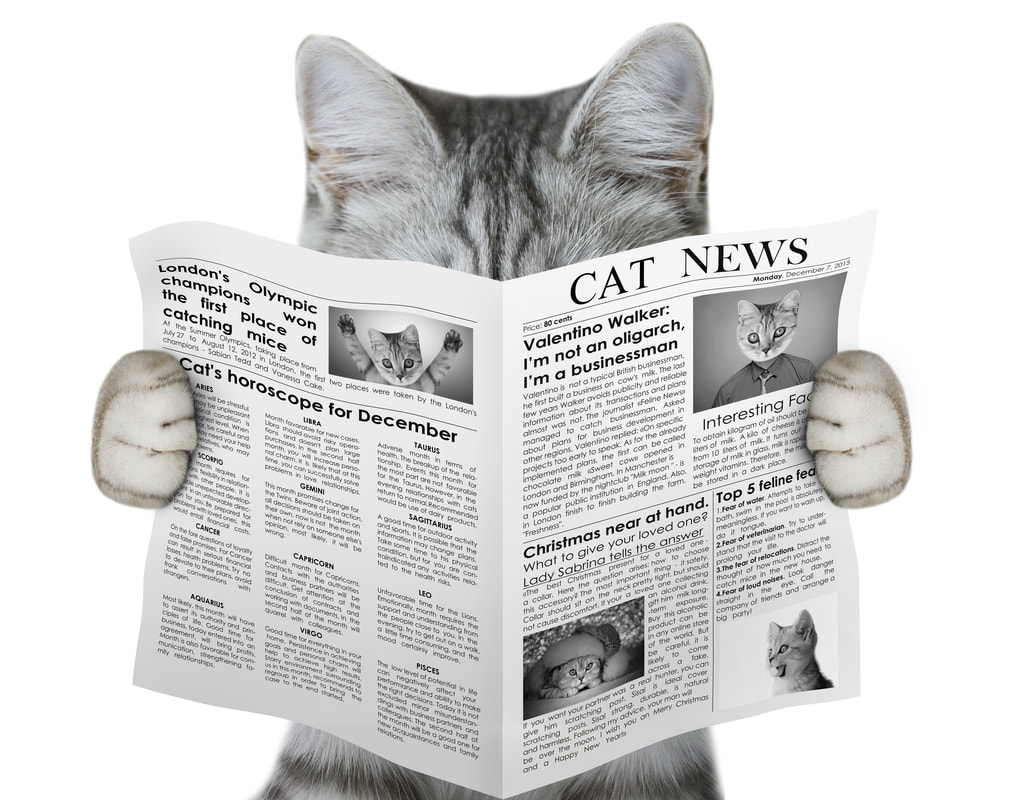|
Pyometra is an infection in the uterus. Pyometra is considered a serious and life threatening condition that must be treated quickly and aggressively. All cats being treated for pyometra should immediately begin antibiotic therapy.
Causes of Pyometra? The Latin word “pyo” means pus and “metra” is the uterus, so pyometra is essentially an infected uterus. It’s caused by the growth of E.coli bacteria in the lining of the uterus over time, which originally travel up from the animal’s vulva when it is open during heat. With many Breeds of cats you can allow them to cycle in and out of heat a few times before allowing them to mate, thus allowing for breaks between litters. These breaks allow for a Queen to regain a good weight and replenish the body. However, the Bengal Breed must be treated differently than most cat breeds. This is because the Bengal Breed has a more intense and harsher heat cycle that will deplete energy stores and lasts much longer if not bred. In addition, when females are in heat their cervix will dilate to allow entry for the male's sperm. This dilation also leaves the uterus vulnerable to opportunistic bacteria to move in that normally peacefully coexist within the vaginal walls. With most Breeds, the heat cycle is short and the window of opportunity for uterine infection is minimized. With a longer heat cycle, Bengals inherently are much more susceptible to Pyometra. Successful matings will decrease the normally harsh and long heat cycle of a Bengal and minimize the chances of getting Pyometra. It is because of this difference in the Bengal Breed that the best policy is to neuter your female Bengal unless you plan to breed her. if you do plan to breed her, Breed her when she comes into heat and do not miss heat cycles. The exception is that in general Bengals should not be bred until they are at least one year old unless they have had at least two heat cycles or have long and repeated heat cycles. Breeding Bengals Require Higher Nutrition: Breeding Bengals require higher nutrition and supplements to alleviate the stress of more litters and should also be retired sooner than other cat Breeds. A famous breeder Marianne of WildStyle Bengals used to be known for Breeding exotic Persians. She bred this Breed for over 20 years allowing for breaks in between litters. When she transitioned to the Bengal Breed and tried to use this same policy, many of her Queens came down with Pyometra. She had to learn the hard way that the Bengal Breed requires a different Breeding routine. Signs of Pyometra Symptoms of pyometra include the animal feeling unwell, such as vomiting, refusal to eat, lethargy, increased thirst and frequent urination. She may also appear to be uncomfortable. Types of Pyometra Infection: Cats can get one of two different types of pyometra infection. The first is an open pyometra, which means the cervix stays open and the infection is able to drain out. In a closed pyometra, however, the contents of the uterus aren’t able to escape and they can become toxic. A closed pyometra in cats is harder to diagnose and generally makes the animal more severely ill than an open one. If your cat has an open pyometra there may be a foul-smelling, white- or green-colored discharge coming from her vagina, which is the infected pus draining out. If she shows symptoms of a bloated or swollen abdomen without a discharge, she could have a closed pyometra infection. By the time you see any of these external signs, however, the condition is in a fairly advanced stage, so you’ll need to get medical attention right away. What the Vet Will Do: The first thing your vet will do if he or she suspects pyometra is to examine your pet’s belly. An ultrasound is a useful, non-invasive method of checking whether a swollen abdomen is caused by infection and not by pregnancy. Your vet will take a sample of the discharge for testing, to determine what type of bacteria is causing the infection. Depending on how ill the pet is, she might need to stay overnight in the hospital for treatment. Treating Pyometra with Surgery: The most common treatment for all pyometra, and the only option for a closed infection, is surgery to remove the cat’s uterus. This is a difficult, high-risk operation because if the infection spills during removal it can be dangerous for the patient. The pet also needs antibiotics to kill any bacteria that might escape the surgery, and because it is a complex procedure, she will need to be hospitalized for a day or two afterwards. Alternative Treatment Option: An alternative treatment option for open pyometra in cats is a course of Antibiotic injections. This is only possible if the illness is caught in the early stages, and is not recommended unless your pet is a valuable breeding animal. This form of treatment takes about a week and requires full hospitalization and careful observation during the process. If you’re planning to breed your pet, it’s vital to do so in the heat cycle immediately following the infection, or her chances of becoming re-infected can be as much as 77%. Outlook: The outlook for your pet after surgical removal of a pyometra is usually full recovery with no chance for the infection to recur. Cats with open pyometra respond fairly well to antibiotic treatment and can go on to be as fertile as before. The defining factor in keeping your pet as healthy as possible is to keep a careful eye out for any unusual changes in behavior. If your pet shows lack of appetite or energy, it could be an indication of anything from colitis to pyometra. Any time your cat seems to be feeling unwell, it’s always best to get her examined as soon as you can. That way any medical conditions can be treated early, which greatly increases the chances of a favorable outcome and lessens the impact on your emotions—and your wallet! How often should you breed Bengals? Queens, when kept in optimal health, prefer to be in either one of two states, either Pregnant or Nursing but not both. Since both pregnancy and lactation require an enormous amount of energy consumption, it is best not to do both. For this reason, often times Queens do not go into heat until after their litter has been either weaned at 6 weeks or they're gone at 8 weeks. This frees up the Queen for concentrating on starting the next litter. In this way, cats are very prolific. We, at Registered Bengals, encourage easy pregnancies, large litters, large kittens, and easy heat cycles by using the best nutrition available in unlimited quantities. With this nutritional support system in place, Queens can have the potential of having 2-3 litters annually. Just because a Queen mates during her heat cycle it doesn't mean that pregnancy is assured. There are a variety of reasons why a Queen may not get pregnant, such as low weight, not enough matings, immaturity of the Queen or Stud, compromised health, there was an early miscarriage, lower fertility, or sometimes it just doesn't take. When a Queen doesn't become pregnant during her heat cycle, she will usually not go back into heat until 1-2 months have lapsed if ovulation occurred or as early as 2-3 weeks if ovulation did not occur at all. The increased frequency of heat cycles from lack of ovulation is yet another reason why Bengals are more susceptible to Pyometra. When to retire a Breeding Bengal? In general, Bengals retire at 4-6 years old and is dependent upon the individual Queen. In contrast, other Breeds may not retire their Queens until 8+ years. Breeders look for signs of decreased fertility and fatigue like: consistently small litter sizes of 1-2, difficulty getting pregnant, difficulty birthing litters, and higher-than-average stillborn or infant death rates. Male studs may retire a little older but fertility rates drop with age as well. Once a Breeder retires, they are generally spayed/neutered and sold at a significantly decreased price and live the rest of their life as a loved family pet. The price of a retired Breeder is usually dependent upon how old they are ($350-$700). Before you purchase a retired Breeder, it is best to know under which conditions did this Breeder spend most of their life. A retired Breeder that spent most of their life in a cage or with minimal human involvement may not be the best pet. We are not veterinarians and have no medical training, The information above was taken from multiple sources online and is presented here for informational purposes only. If you suspect your cat may have Pyometra, Contact your Veterinarian as soon as possible. For more information on Registered Bengal Cats visit our site:
0 Comments
Your comment will be posted after it is approved.
Leave a Reply. |
Registered Bengals
We raise quality TICA & CFA Registered Purebred Bengal Kittens in our home in Beautiful, Kalama, Wa. Archives
April 2020
Categories
All
Blog Titles:
|
If you are visiting our site Registeredbengals.com from a Mobile device you may have a better experience visiting our
other Page Bengaltimecattery.com. The content is exactly the same but the pages will display
in "Desktop mode" which should make for a better browsing experience.
other Page Bengaltimecattery.com. The content is exactly the same but the pages will display
in "Desktop mode" which should make for a better browsing experience.
Your positive reviews and comments on the sites above would be appreciated.
If we did not meet your expectations please contact us
and give us an opportunity to make it right.
If we did not meet your expectations please contact us
and give us an opportunity to make it right.
|
Lyubov & Andy 503-484-3033 [email protected] Registered Bengals / Bengaltime Cattery Verified / Reputable Bengal Breeders Kalama, Washington |
Site Updated 6/1/25
|
2019 / 2020
CFA Bengal Breed Council Member. |
|
©2016 - ©2025 by Registered Bengals - Washington State Bengal Breeder
Schedule an appointment to come visit your kitten you can see your kitten by facetime almost anytime. Shipping and or personal delivery available (To Bookmark this page use "Control D" Windows or "Command D" Mac) |
Bengal kittens for sale, Bengal kittens available, Hypoallergenic cats, Bengal colors and patterns, Bengal Stud Service, Registered Bengals, Bengal Time, Bengal kittens in Oregon, Bengal kittens in Portland, Bengal kittens in Washington, Bengal kittens in Seattle, Bengal kittens in Spokane, Seattle Bengals, Bengal cats in California, Bengal cats near me, West coast Bengal cats, Bengal BLOG, Bengal kitten prices, How much is a bengal kitten, Bengal cat health issues, Best Bengal kitten breeders, Bengal Health Guarantee, Bengal cattery, Cattery, Bengal, Bengal Yelp Reviews, #available #bengal #bengal cat #bengal kitten #bengals #bengals nation #bengals of instagram #bengal cat lovers #bengal world #bengal breed #kittens #kittens of instagram, leopards #living room leopard #cats #phenomenal kittens #fabulous pets #TICA #CFA #Bengaltime #Registered Bengals #Cattery #Kittens near me #Lap Leopards #lil Leopards #Bengals near me #Bengal Bengal Kittens in Idaho, Bengal kittens in Utah, Bengal Kittens in the Pacific Northwest, Bengal Adoption, Adult Bengal cats, Bengals for sale to breeders, Bengal Health issues, Best cats, Most expensive cats, make money breeding Bengals, Bengal products, Bengal Pictures, Kitten Pictures, Cat products, Cat Vitamins, Raw feeding, Cattery, Breeder, Tica. CFA, The International Cat Association, Cat Fanciers of America, Hypoallergenic, For Sale,Best Christmas Gift, New Years Gift, Birthday Gift, Gifts for Her, Bengal Cats,Verified Bengal Breeder,VBB, The international Bengal Cat Society, TIBCS, Emotional support kittens, ESA, Emotional support cats, Reputable Breeder, HCM Tested, DNA Tested, You are the best Bengal Breeders














 RSS Feed
RSS Feed































